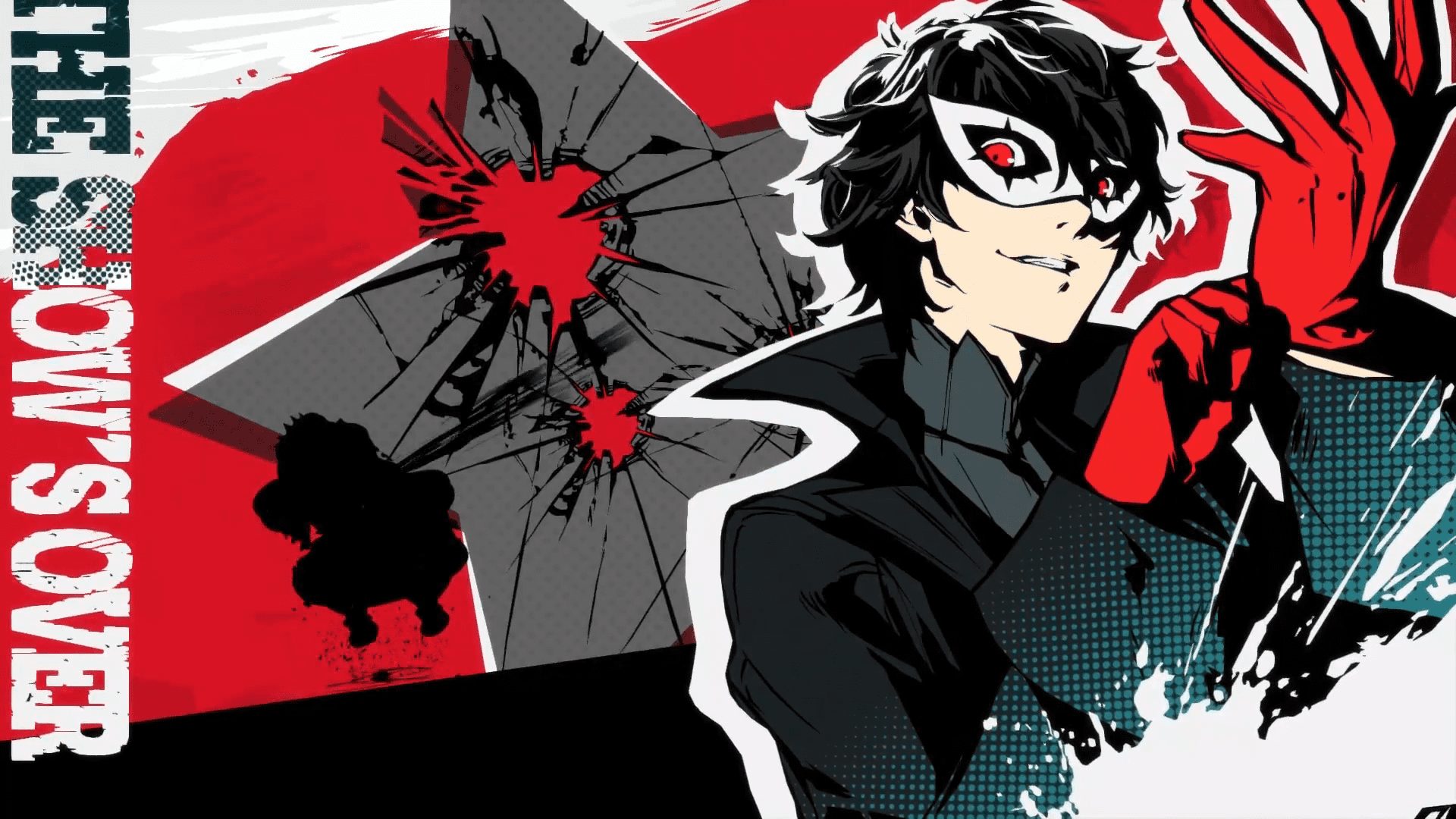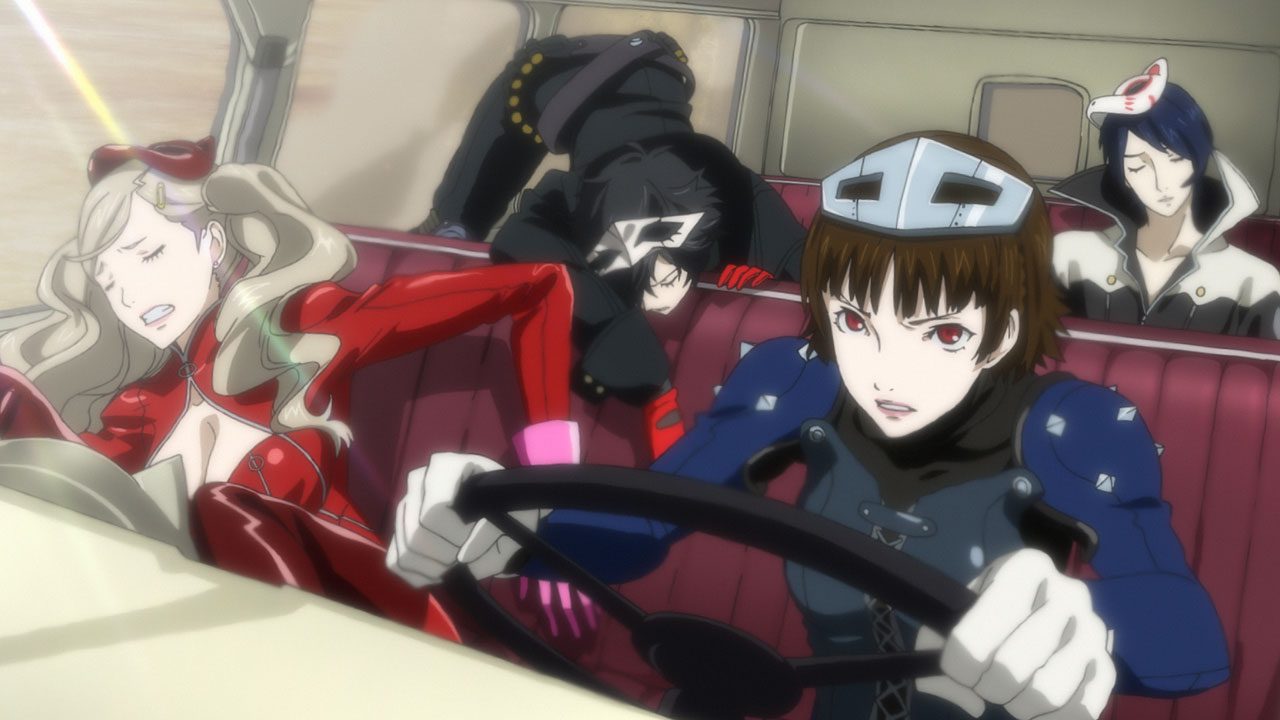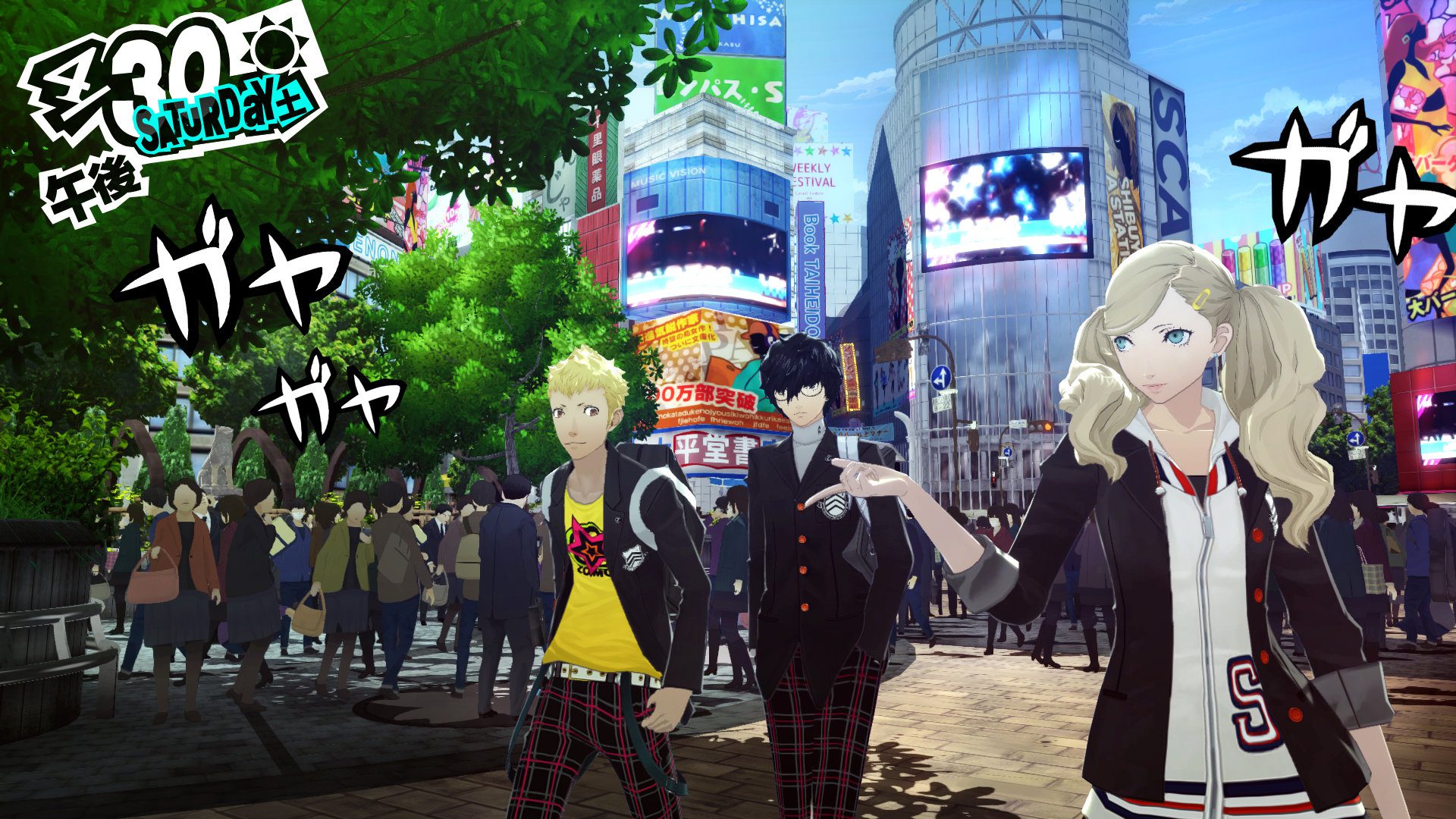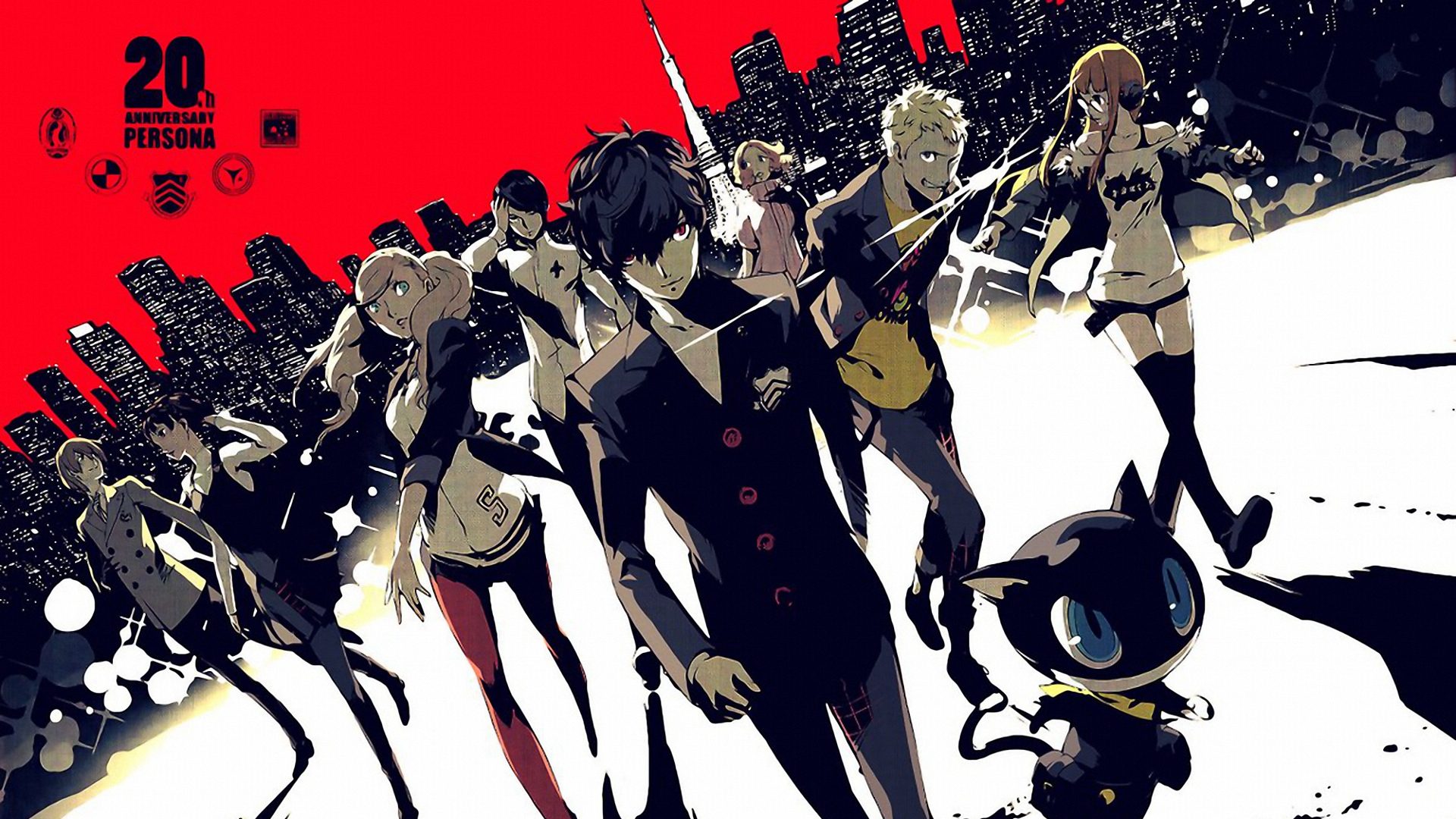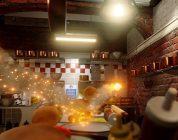Carl Jung described a persona as “a kind of mask, designed on the one hand to make a definite impression upon others, and on the other to conceal the true nature of the individual.” This idea from 1953 perfectly describes the themes at work in Atlus’ Persona 5 on the PS4 and PS3. For this review, I was asked to take my time, resulting in a wild ride into the strange world of Persona for the first time. What I discovered in this JRPG was a masterpiece of the genre. I never saw this coming!
Back when Persona 5 was announced to be coming the PS4, I thought the game looked interesting, but due to my ignorance of the series, I sidestepped the release entirely. At that time I was exploring the vast world of Hyrule on the Switch, a game that I consider one of the best Legend of Zelda games ever made, second only to Link to the Past and Link’s Awakening. Little did I know that Persona 5 had arrived to set the standard on the JRPG genre, a genre that I felt has become incredibly stale and rife with lazy design choices in favor of cute characters that are easy to make merchandise of.
Persona 5 can only be described as a JRPG, one that blends tactical battles with demons and managing relationships as a high school student with that telltale Japanese style. While many JRPGs I’ve played recently all had elements that are present in this game, Persona 5 goes about them with elegance and flair. From the outset of the game, there is a beautifully animated introduction, showing off most of the game’s cast of varied characters. Even the game’s menus are filled with gorgeous styling, to the point of being pretty daunting the first time they’re opened. Luckily, the game trickles its mechanics slowly to ensure the player rarely gets overwhelmed. Even after fifty hours, I’m still being introduced to new concepts or gaining new powers that change how I approach challenges.
One of the main criticisms I’ve heard about the Persona series is its slow startup and stark difficulty. Many of these games are known for having tons of dialogue and character development with battles coming sometimes ten hours after starting. Persona 5 fixes this by tossing the player into a frame narrative where our hero is breaking into a Palace to steal a valuable treasure. This early tease of the vast dungeons to come allows the player to build excitement for the seemingly simple and addictive combat. Most of the story takes place in the past, framed by an intense interrogation scene of our hero. Those worried about the game’s difficulty need not worry; there are plenty of levels to pick from. Do try to meet the game’s deadlines though, as failing to do so ends the game entirely, typically in a horribly violent fashion. Luckily, if the game hasn’t been saved in a while, it kicks the player a week back from their current day.
Combat is comparable to Pokemon, as most of the game’s strategies involve exploiting an enemies weakness. Doing this grants that character an extra turn, which they can use to knock down more monsters or tag in another party member, just to name a few early strategies. These enemies are demons, many of which will be familiar to players of any other game in the Shin Megami Tensei line. Additionally, the demons are often symbolic of the emotions of the Palace they are in, adding layers to the game’s narrative and settings. Collecting these persona is also just as addictive as other monster-based RPGs.
Another problem many players had with previous entries in the franchise was the rather lackluster dungeon design. These dungeons were usually simple in layout with randomized elements that can easily bleed into monotony, or at least so I’ve seen from reviews and what friends have shared. Persona 5 has two different types of dungeons, the story related Palaces and the randomly generated Mementos. Palaces are huge metaphysical representations of a person’s twisted desires. For example, one enemy is a mafia leader, who sees his victims as ATM machines. His Palace is a giant bank, guarded by burly demons with tons of brute force. Each of these dungeons are vast and usually take a few visits to finish, making them feel that much bigger and more important.
On the other side of dungeons are the Mementos, which are more akin to the classic dungeons of the series. This underground subway is a collective cognition of the people of Japan, resulting in a twisted series of tunnels with hulking beasts around every corner. There are side quests in the Mementos, which are great for leveling characters and finding more gear, but sections are locked to avoid a player powering through them and be overpowered in the main dungeons. Both of these dungeons exist in a parallel dimension of the real world, making for really intriguing narrative opportunities. I personally found Palaces to be fascinating, filled with symbolism and the chance to look deeper at a character. Combat here is well-paced and I rarely felt too weak to continue. There are also a few simple puzzles, with only a couple making me scratch my head. Mementos have some interesting quests, which usually involve changing someone’s heart to fix a problem, but on a much smaller scale than the Palaces.
To enter these dungeons, our heroes embrace their other selves, their personas, and follow the directions of a mysterious navigation app on their phones. This necessary transformation is typically the result of a character having a dramatic change in perception of their own personalities or overcoming something personally. One of my favorite examples is that of Makoto Niijima, who is a timid follower of authority. Once her persona awakens, her true, more dominant nature erupts. Her outfit and persona demon reflect this change as well, giving her a skin-tight leather suit, studded knuckles, and a motorcycle named Johanna. These transformations are some of the most epic moments of the story, using the game’s cell shaded characters to the fullest. Adding all of these characters together creates the party, who go into the Palaces to steal a person’s heart, represented by a precious treasure. Its not long before the team start to call themselves the Phantom Thieves, bringers of justice to the corrupt citizens of Japan.
Persona 5 is probably one of my favorite representations of Japan. Crowded streets are the homes of eccentric shops run by unique people. Travel is done exclusively via public transportation, having our hero Joker pay for tickets that aren’t already free with his train pass or walking down narrow streets to visit a friend. While these environments are relatively small when compared to other games, these areas are dense with function. For those that easily get lost, like myself, there’s also a handy fast traveling system. Hopping around Japan feels fluid and the maps also show which characters are available to increase their relationship level.
In between these transition scenes, Atlus uses clever graphics to hide the fact that the game is loading. Most of the time, the transition has something to do with where the player is going. For example, if a train has to be caught to get where Joker is going, the screen shows the crowded subway riders jostling to the movement of the train. Entering a Palace fills the screen in red, almost liquid, circles. Leaving a battle shows Joker and friends running away with flashes of what was acquired at the end of the fight. It all flows really well, visually and technically, as a clever trick.
While not delving into dungeons to steal hearts, Joker must create relationships to strengthen his personas. Strangely, Joker is the only one who can wield the powers of multiple persona, allowing him to switch for added options. Other characters only use their one persona, which can get stronger after maxing out their connection with Joker as a kind of evolution. These characters are called Confidants, which includes many characters outside of the main party. Increasing these relationships is as easy as spending time with those characters and making correct choices during conversations or giving that person appropriate gifts. Doing so adds extra things like being able to create cards to get new abilities or doing extra follow up attacks, just to name a few of the interesting additions.
The Confidant system is an awesome way of keeping track of which characters the player wants to level. Each character is represented by a tarot card, usually being choices that fits their personalities or the underside of their character. Having a persona of that person’s tarot card type also adds bonuses to encounters, which can make leveling a quicker endeavor. This can be a challenge early on though, as Joker can only have so many persona at a time, making fusion a requirement.
Fusing persona is the most effective way to create new and stronger demons. To do this, Joker enters the Velvet Room, a reoccurring dimension in Persona controlled by Igor. Igor claims to be rehabilitating Joker, who in the Velvet Room is a prisoner. This is a direct visualization of Joker’s situation, who is put on parole at the outset of the game’s narrative. All eyes are on Joker as he is instantly regarded as a criminal in his school, putting him at a severe disadvantage when confronting corrupt authority figures who could easily claim he has broken his parole. Gathering Persona takes a bit of getting used, but there are few different ways to get more masks, which is the item that holds a persona’s power.
Coming from the Shin Megami Tensei series, weakening all of the demons on the field leads to a Hold Up for a chance to convince them to join the team. This is where Joker and the Phantom Thieves can negotiate with demons to acquire more personas. This is done through kind of arbitrary dialogue choices with the monsters. I can never really find a strategy to this, but it can lead to some funny chats with powerful monsters. Severely weakening demons can lead to them begging for their lives, which can be an easier way to get more personas.
Persona 5 is filled with clever little things like this; many visual elements are elaborate symbols of deeper, often darker emotions. This is coupled with an amazing soundtrack with a variety of musical genres ranging from J-Pop to jazz. Gameplay systems are simple to grasp, but have an insane amount of depth for those that reach a deeper understanding. All of this creates almost a sensory overload, but it surprisingly remains coherent.
Really the only criticism I have about Persona 5 is its often stiff feeling movement. Joker has to be stealthy when inside dungeons (he is a Phantom Thief after all) which can be a bit awkward to pull off due to how Joker moves. There were a few times I found myself not hitting the sweet spot to hit a switch, only to get caught by an enemy. Luckily, it take a lot of blunders before being caught is a problem. Once that awareness reaches 100% though, Joker will be forced to retreat the Palace altogether. A simple fix to this would be an easier way to have Joker walk instead of run everywhere.
Also, if Persona 5 were to come to the Vita or Switch, I would likely never leave its strange world. I did get to do some Remote Play on the Vita though and that felt amazing. Hopefully an expanded version comes to handhelds or something.
The game’s narrative is surprisingly human, focusing more on connections between characters in relatable situations. Each act has excellent writing to the point of absurdity. No wonder it took so many years for Persona 5 to be released, as there is just tons and tons of text. What makes Persona 5 truly stand out in its story is the darker tone and mature themes. There were moments in the story that left me slack-jawed, in total awe that something this horrible could occur to these characters. Backstories often reveals tender moments, steeling my resolve into helping them. It’s been a long time since I felt this level of attachment with a game’s entire cast, but Persona 5 never becomes stale. Sure the writing isn’t likely to win awards in literature, but there are so many levels of depth that I honestly wasn’t expecting.
I found the gameplay loop of going into dungeons, capturing stronger and stronger personas, and raising the level of my confidants extremely engaging and addictive. Once I got into the groove on how the battle menus were laid out, I could finish battles in single turns, effortlessly flying through menus for an optimized attack. Making connections with the other characters led to some truly heartwarming and endearing moments, which made me feel for these unlikely heroes. Once again, these are interactions I won’t soon forget.
The most exciting part of Persona 5 for me was how it expertly introduces its players to such a daunting series. I had never played more than a few hours of a Persona or Shin Megami Tensei game, but after my time with Persona 5, I have a deep desire to check out more games in the series. As of this writing, I have yet to finish the entire game, sitting at roughly sixty hours of game time. However, I anxiously await coming to the game’s conclusion and I anticipate starting it up a second time after that.
Persona 5 takes the JRPG mold to create an intensely original, deep experience in its gameplay, presentation, and narrative. There are not many games that pull it off quite like Persona 5, marking it as a masterpiece title that will set a benchmark for years to come.
Persona 5 is available on both the PS3 and the PS4. More information can be found on the official website.
For another JRPG review, check out my review of MeiQ: Labyrinth of Death on PSVita.
A review code was provided for this review. Screenshots were not able to be captured on the PS4 due to capture limitations currently on the game.

